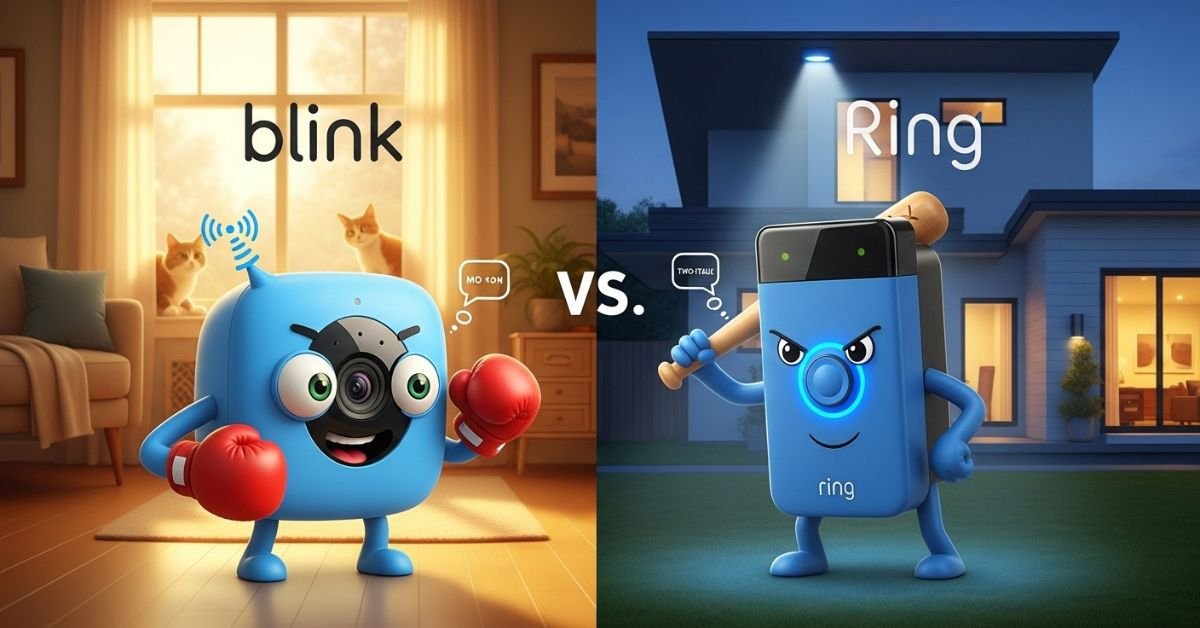Contents
Introduction to Home Security Systems
Home security is a priority for many homeowners, and choosing the right system can be a daunting task. With various options available on the market, two names often rise to the top: Blink and Ring. Both brands offer innovative solutions that promise peace of mind, but how do they stack up against each other?
Whether you’re looking for smart cameras, doorbells, or entire home systems, understanding these products’ features and benefits will help you make an informed decision. In this blog post, we’ll dive deep into what makes Blink and Ring unique contenders in the world of home security. Get ready to explore their offerings and find out which one might just be your perfect match!
Overview of Blink and Ring
Blink and Ring are two prominent names in the home security landscape. Each offers distinct advantages, catering to different needs and preferences.
Blink is known for its simplicity and affordability. Its wireless cameras make installation a breeze, appealing to those who want quick setup without the fuss of complicated wiring. The compact design fits seamlessly into any environment.
On the other hand, Ring stands out with its array of options beyond just cameras. From video doorbells to comprehensive security systems, it provides versatile solutions that can cover an entire home. Integration with smart home devices enhances user experience further.
Both brands prioritize user-friendly mobile apps for remote access and control. This ensures homeowners stay connected no matter where they are.
While Blink focuses on budget-conscious consumers seeking straightforward surveillance, Ring targets users looking for advanced features and broader protection solutions.
Features and Benefits of Blink
Blink offers a user-friendly experience with its easy installation process. You can set it up in minutes, requiring no professional help. This makes it perfect for those who want an immediate security solution.
The cameras are wireless and run on batteries, ensuring flexibility in placement around your home. You won’t be bound by outlets or cords.
High-definition video quality is another standout feature. Blink provides crisp images day and night, helping you keep an eye on your property effectively.
One of the biggest advantages is the integration with Amazon Alexa. This allows seamless control through voice commands, adding convenience to your security routine.
With free cloud storage included, users can access their recordings without any additional fees. This makes Blink a cost-effective choice for budget-conscious consumers seeking reliable surveillance solutions.
Features and Benefits of Ring
Ring offers an impressive suite of features designed to enhance home security. Their video doorbells provide real-time alerts whenever someone approaches your front door, ensuring you never miss a visitor or package delivery.
The high-definition video quality is a standout feature. With clear images both day and night, you can easily monitor activity around your property.
Ring’s integration with smart home devices sets it apart from competitors. You can connect it seamlessly with Alexa for voice commands and other functionalities.
Another significant benefit is the Ring app. It provides remote access to live feeds and recorded footage, putting control in the palm of your hand.
With multiple subscription plans available, users have flexibility in choosing how much cloud storage they need for their recorded videos. This makes it easy to find a plan that fits any budget while enhancing overall security measures at home.
Pricing Comparison
When evaluating home security systems, pricing plays a pivotal role. Blink offers an appealing entry point with its affordable camera options and no monthly fees for basic features. This makes it attractive to budget-conscious consumers who want reliable monitoring without breaking the bank.
On the other hand, Ring provides various packages that cater to different needs and preferences. While initial costs might be higher, users gain access to advanced features like professional monitoring and cloud storage. Monthly subscription plans vary, depending on which services you choose.
Both brands bring great value but differ significantly in their approach to pricing structures. It’s essential to consider what level of investment aligns with your security needs before making a decision. Exploring long-term costs versus upfront expenses can make all the difference in choosing between these two popular systems.
User Reviews and Satisfaction Ratings
User reviews play a pivotal role in understanding the real-world performance of Blink and Ring. Blink’s easy setup and intuitive app layout are praised by many customers. Their compact cameras fit seamlessly into any home, making them an appealing choice for those new to smart security.
On the other hand, Ring often receives accolades for its extensive features, such as video doorbells and integration with other smart devices. Customers appreciate the two-way communication feature that enhances safety while allowing them to interact with visitors remotely.
Satisfaction ratings show both brands have loyal followings. However, some users express concerns over connectivity issues with Blink during peak hours. Meanwhile, Ring occasionally faces criticism regarding subscription costs tied to recording features.
Understanding these perspectives can help potential buyers make informed decisions based on genuine experiences rather than just marketing claims.
Additional Factors to Consider
When choosing between Blink and Ring, consider your home layout. Some systems work better in larger spaces while others excel in smaller homes. Placement of cameras can affect coverage and effectiveness.
Integration with smart home devices is another essential factor. If you already use products from Amazon Alexa or Google Assistant, ensure compatibility for seamless control.
Battery life plays a crucial role too. Depending on usage and location, some models may require more frequent recharging than others.
Think about installation complexity as well. Blink offers a straightforward setup process, while Ring might involve additional wiring for advanced features.
Customer support availability can make a difference during troubleshooting or inquiries. Check reviews to gauge how responsive each brand is when users face issues or need assistance.
Which System is Right for You?
Choosing between Blink and Ring depends on your specific needs and lifestyle.
If you want a budget-friendly option with basic features, Blink could be the right fit. It’s ideal for those who prioritize simplicity without sacrificing essential security functionalities. Anyone can use it because of the simple installation procedure.
On the other hand, if you’re looking for advanced technology such as smart home integration and customizable settings, Ring might suit you better. Its comprehensive features cater to users who desire a more hands-on approach to their security system.
Consider how many cameras you need and whether video quality is a priority. Think about whether additional services like professional monitoring are essential for your peace of mind.
Reflect on what matters most in your daily life and how each system aligns with that vision.
Final Verdict:
When it comes to home security systems, both Blink and Ring offer solid options. Each has special qualities that meet various demands.
Blink is known for its affordability and straightforward installation process. Because of its small size, it can be easily placed anyplace in your house.Because of the remarkable battery life, you may rest easy knowing that regular maintenance is not necessary.
However, Ring distinguishes itself with a wide array of goods, including cameras and doorbells. It offers advanced features like two-way audio and customizable motion zones, appealing to those who require a bit more flexibility in their security setup.
Pricing plays a crucial role when deciding between these two systems. Blink generally tends to be more budget-friendly upfront but may lack some premium features found in Ring products. However, considering ongoing subscription costs for video storage can tip the scales depending on what you need long-term.
User reviews reveal mixed feelings about both brands. Some love Blink’s ease of use while others praise Ring’s robust integration with smart home devices. Satisfaction ratings vary widely based on individual expectations and experiences.
Additional factors such as customer service quality or ecosystem compatibility should also influence your choice. If you’re already invested in smart technology ecosystems like Amazon Alexa or Google Home, this could sway your decision one way or another.
Choosing the right system ultimately depends on what matters most to you—cost-effectiveness versus feature richness—or which brand aligns better with your lifestyle preferences and security needs. Whether you go for Blink or Ring will shape how secure you feel at home moving forward; weighing all aspects carefully will help ensure that whichever option you select serves your household best over time.



